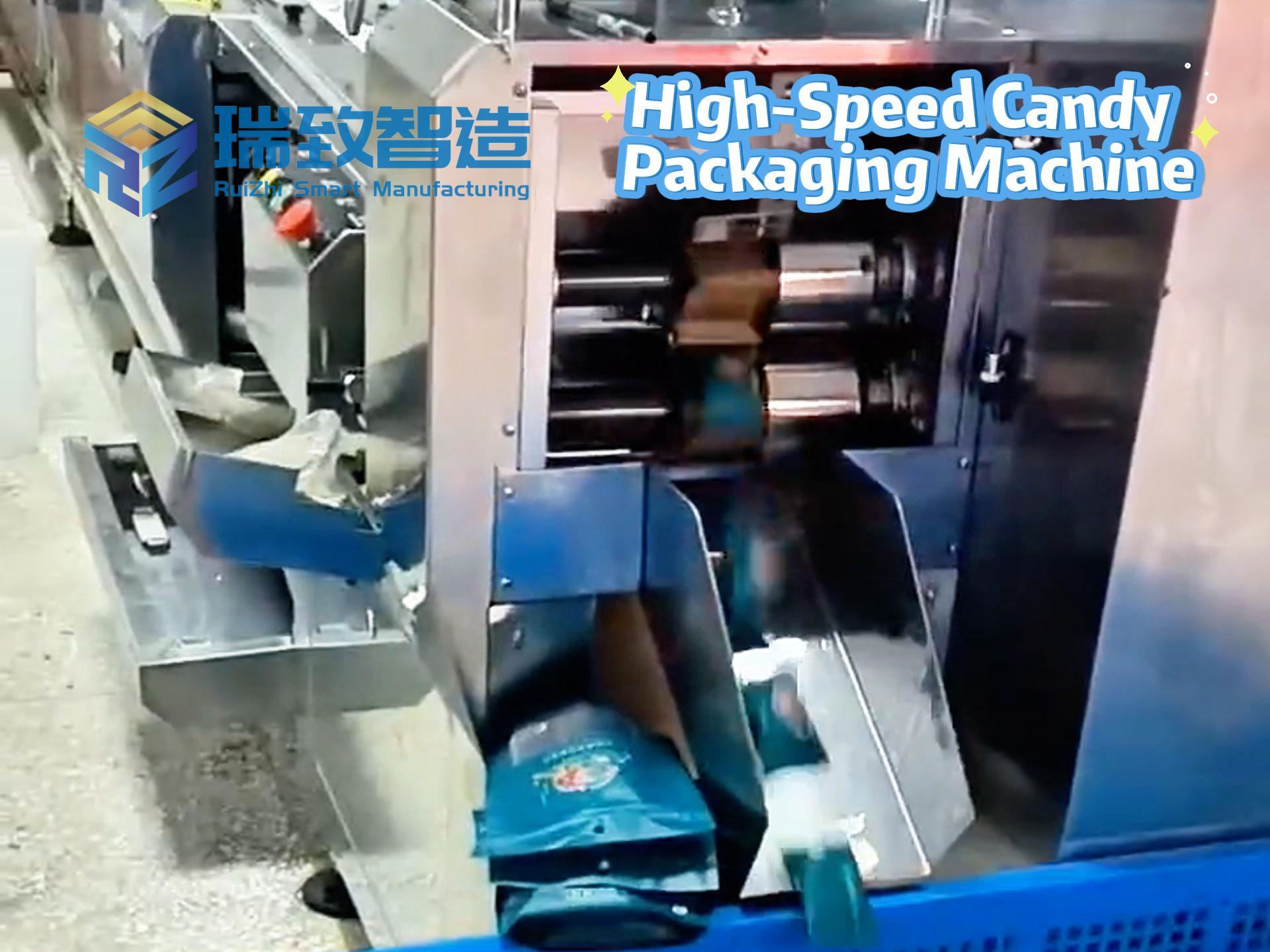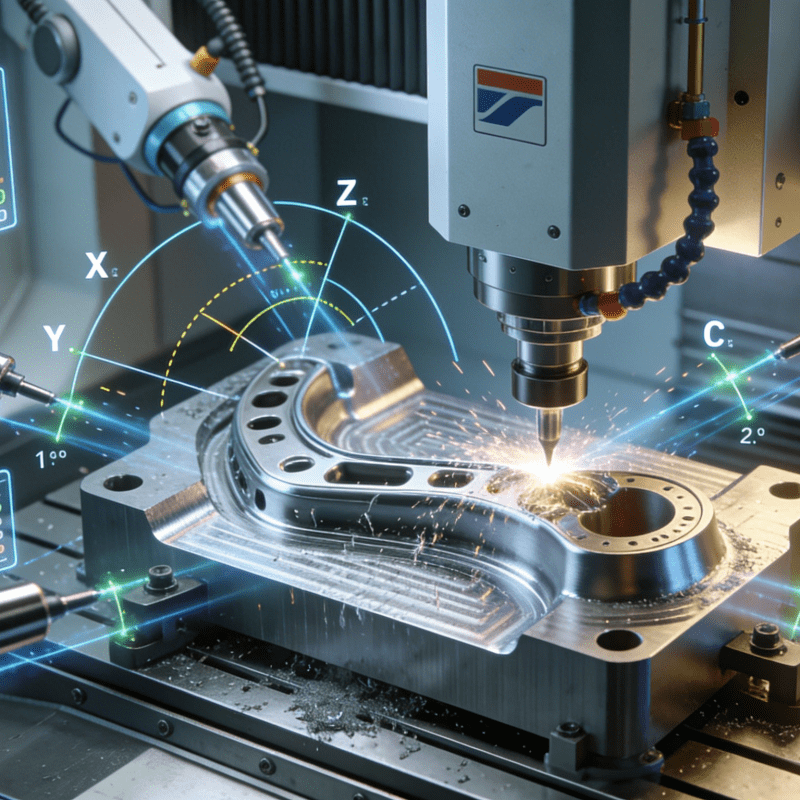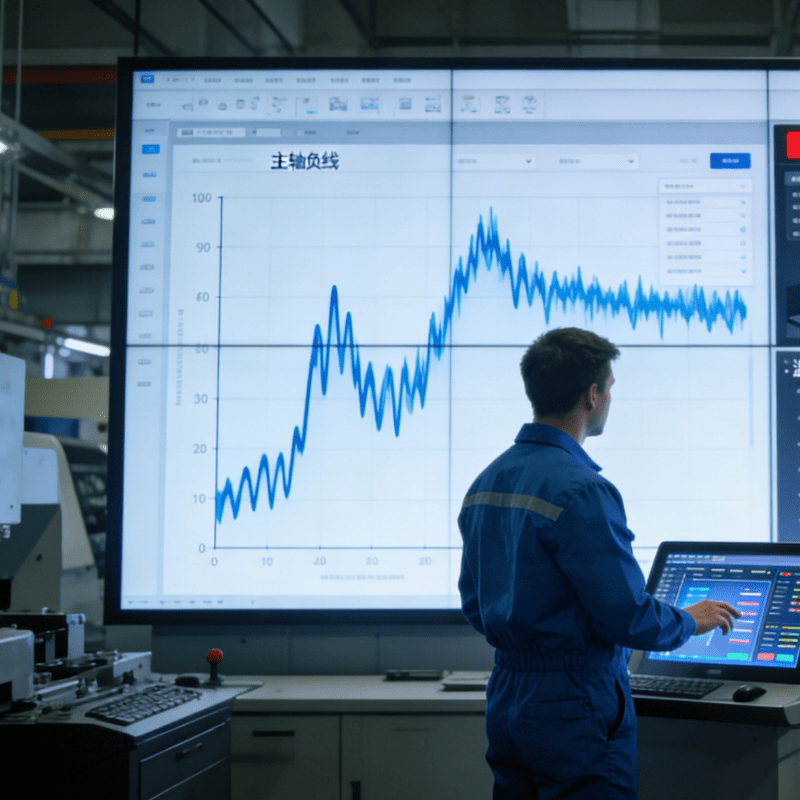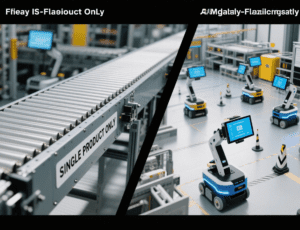
Adapting to Volume, Product, and Channel Shifts: Flexibility Meets Unpredictable Demand
There’s no longer a single, relatively predictable peak season for shipping. A surge in orders can come because it’s Mother’s Day, or because a celebrity sported a designer bag at the Oscars, or any number of the inscrutable things that go on with influencers on social media.
“We’re constantly being told we’re in a whole new world, especially in terms of retail, but what, specifically, does that mean inside the warehouse?” muses Johnson. “If you’re suddenly selling 30,000 pieces of an item in a day, you can move all that over to a fast-pick station.” Instead of one place where picking is being conducted by one bot at a time, you can use 20 robots at a time to pick that item and get it out of the door, in what Johnson refers to as Fast Pick. “They surround this thing and pick it like crazy,” he says. This agility stands in stark contrast to fixed automation—for example, a traditional automatic assembly machine designed to assemble only one type of component at a set speed; if order volumes for that component spike, the machine can’t scale up beyond its preset capacity, nor can it shift to assembling a different part to meet sudden demand for another product.
DHL Supply Chain’s Dippold particularly appreciates this flexible feature. “It’s where I can get an order through the system faster by disconnecting it from other orders that might be slower,” he says. “Now, we can focus on speed-to-market and serving the customer, gaining natural increases in efficiencies because of the logic and the ability to choose the pick path.” These abilities, Dippold says, have allowed DHL to better and more quickly adjust to the changing demands from their customers—something a fixed automatic assembly machine (tied to a single production task) could never do. “That has helped us to adapt, and to be more agile in our response to those fluctuations.”
The flexibility works well to serve the growth in omnichannel fulfillment, where orders can vary enormously in scale. “With the new automation solutions, you can do omnichannel effectively,” says Johnson. “We have a lot of retailers that truly do it all within one building — e-commerce, wholesale, everything. They can do a bunch of different things in the same building, with the same inventory.” In contrast, fixed automation like a dedicated automatic assembly machine for wholesale-only components would be idle when e-commerce demand surges, wasting resources and limiting responsiveness.
Enhancing Existing Investments with Pick Towers: Integrating Flexibility into Infrastructure
Pick towers can be part of an initial automation project or can come in as second step in the automation journey, Johnson says. That includes either automating existing pick towers or building automation-native ones. The advantages are that you can increase throughput with the same physical footprint— a benefit that complements flexible tools and even augments fixed equipment like automatic assembly machines by streamlining the flow of parts to and from the machines, reducing bottlenecks.
Bentley cites a recent installation for a major retailer who wanted to design greenfield sites to make the most of flexible automation opportunities. The company designed pick towers where bots can pick and pass orders between different tower levels. “They have the flexibility to pack on multiple levels. They really thought about how to optimize the whole experience,” says Bentley. This optimized flow is especially valuable when paired with semi-fixed equipment: for example, if a automatic assembly machine on one floor needs a specific part for a rush order, bots in the pick tower can prioritize that part’s delivery, ensuring the machine doesn’t sit idle waiting for materials.
Existing pick towers are good candidates for automation, although there can be challenges with training staff and also with space — aisle widths less than four feet tend to be a barrier to automation, Johnson says. Even so, retrofitting pick towers to work with flexible robotics is often more cost-effective than replacing fixed systems like old automatic assembly machines that can’t adapt to new product lines.
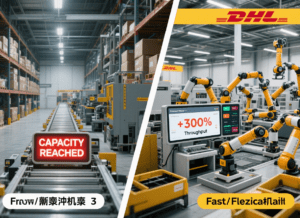
The Future of Warehouse Automation: Flexibility Expands to “Fixed” Tasks
As warehouse automation takes hold, so too will the adoption of flexible automation, even for tasks that seem to necessitate fixed infrastructure. DHL, for example, has tended to favor fixed automation when products are especially large or heavy — for example automotive parts, or parts for HVAC systems. Historically, this might have included fixed automatic assembly machines for bulky components, which were hard to reconfigure for different part sizes. But they’ve recently started seeing the benefits of mobile carts that are designed to handle big, heavy, bulky items. DHL’s Dippold says the secret sauce is the execution software that orchestrates the machines— software that can also integrate with newer, more adaptable automatic assembly machines (equipped with modular tooling) to switch between assembling different heavy-duty parts without major downtime.
Johnson says the innovations getting the most attention at present are those that can increase density and throughput volume to make the most of facility space, as well as deploying artificial intelligence. But the bigger picture is simply that automation as a whole is taking hold, and the benefits of flexible automation, including autonomous robots, are becoming more apparent. For instance, AI-powered software can predict demand spikes and automatically adjust workflows: if a surge in HVAC part orders is forecast, the software can reallocate robots to deliver materials to a flexible automatic assembly machine, while also ramping up pick tower operations to ship finished parts faster.
“There’s a step change,” Johnson says. “We’re really getting towards an automated warehouse, and real levels of autonomy. It’s hard work, but we’re getting there.” Johnson sees opportunities to deploy AMRs in tasks where there’s traditionally been zero automation, such as loading and unloading trucks at warehouse docks— tasks that can complement flexible automatic assembly machines by ensuring a steady, on-demand flow of raw materials and finished goods. “It’s not just about the robots,” says Bentley. “It’s a holistic solution that leads to scalability — the ability to go from 50,000 units a day to 150,000. The thing we like to see is a company that can go 3X or 5X or more within the same building, with the same solution.”
AI will continue to play an important role, Johnson adds. “We see a bunch of initiatives, and it is moving the needle, no question,” he says. “The systems can be highly adaptive. They can take a huge dataset and digest it, help make decisions— like when to retool a flexible automatic assembly machine for a new product, or how many robots to deploy to support it. I think that will continue.”
How to Successfully Implement Automation: Planning for Flexibility (and Fixed Tools)
The greatest path to success when implementing automation in your operations is to have a clear scope and plan, not just for immediate needs but also for future growth. Before engaging an automation provider, it’s crucial to identify the issues you need to resolve, the goals you want to achieve, and how you’ll measure them with KPIs. For example, if you currently use a fixed automatic assembly machine that causes delays when product lines change, a key KPI might be “reconfiguration time for assembly tasks” — a metric that flexible automation can drastically improve. Improving traceability, reducing wrong shipments, reducing manual labor, and achieving IIoT capabilities all manifest differently and need to be prioritized accordingly. Clear KPIs will help your organization understand the impact of an implemented automation solution (such as a flexible automatic assembly machine paired with AMRs) and indicate whether further investment is justified.
Future planning is also essential. Do you plan to expand your facility? Do you want to connect with other facilities? Will you need solutions to be reconfigurable seasonally or per project? The answers to these questions will guide your choice of automation technology. For instance, if you anticipate adding new product lines annually, investing in a flexible automatic assembly machine (with interchangeable tooling) and AMRs will be wiser than a fixed machine that requires costly overhauls. A flexible solution will enable you to quickly adapt to new challenges and leave room for growth.
Once you’ve established your needs and goals, evaluate the feasibility of the implementation and choose your automation provider. Look for a provider who can offer multiple solutions in as few packages as possible, ideally achieving machine-to-machine communication on a single control platform— for example, software that connects AMRs, pick towers, and flexible automatic assembly machines to operate as a cohesive system. Providers often offer ROI calculations and worksite walkthroughs to discuss financial incentives and potential challenges— take advantage of this expertise, especially when weighing the cost of upgrading fixed tools (like old assembly machines) to more flexible alternatives.
What is the market size and development trend of medical product assembly machines?
What are the advantages of medical product assembly machines?

